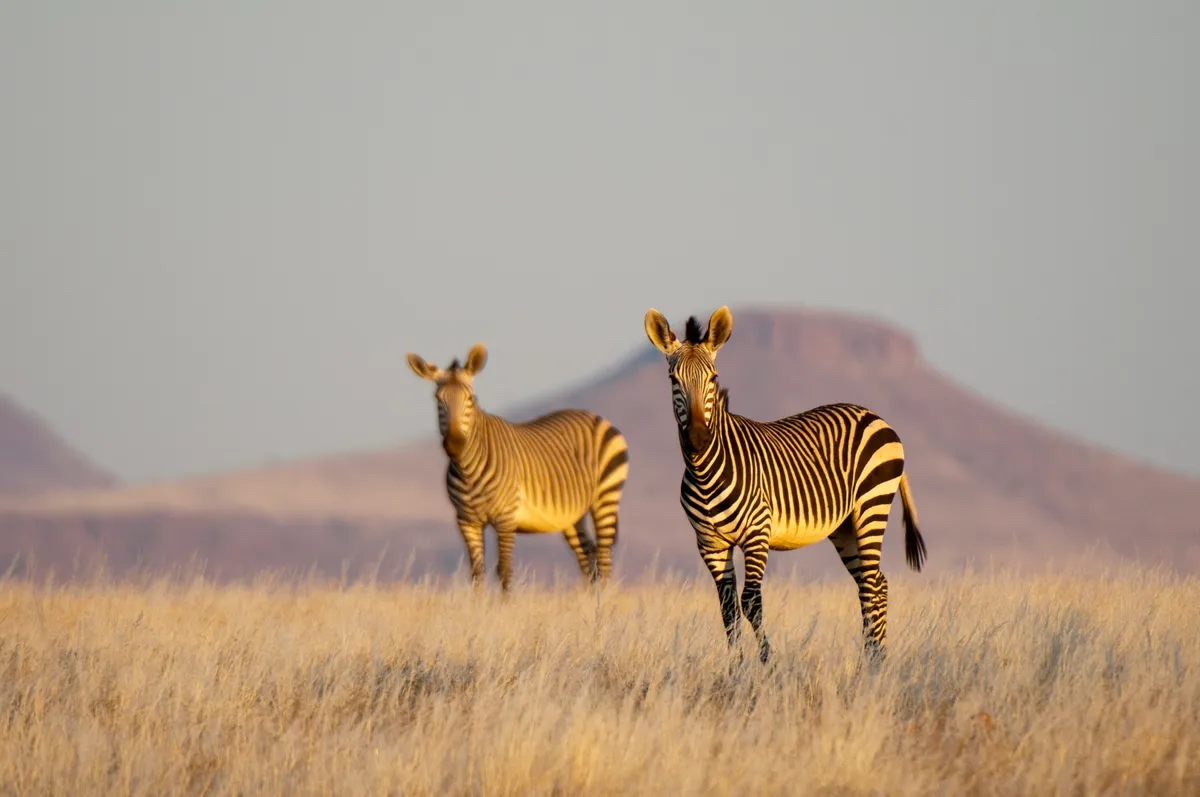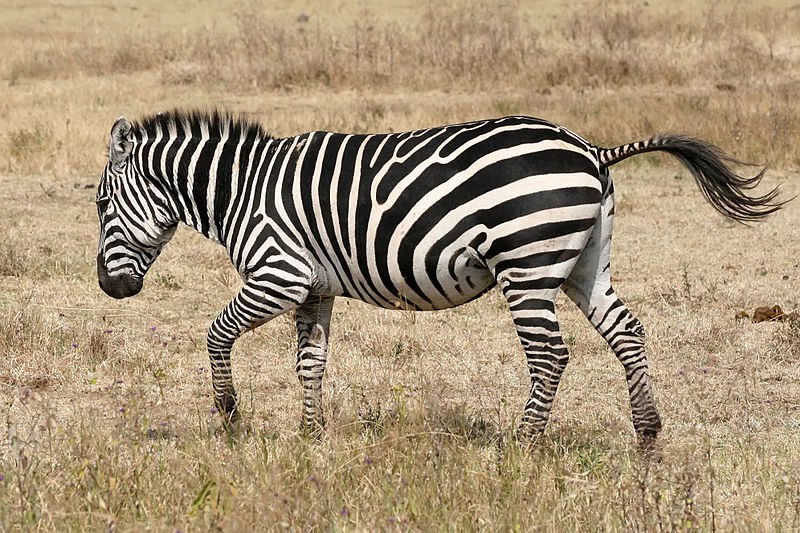Zebras live primarily in various regions of Africa. They inhabit savannas, grasslands, and some mountainous areas.
Zebras are fascinating creatures known for their distinctive black and white stripes. These animals thrive in Africa’s diverse ecosystems, including savannas, grasslands, and even some mountainous terrains. Their habitats are spread across countries like Kenya, Tanzania, and South Africa. Zebras adapt well to these environments, grazing on grasses and moving in herds for protection.
They play a crucial role in the ecosystem by aiding in grassland health and serving as prey for predators. Understanding the habitat and lifestyle of zebras is essential for their conservation and the preservation of Africa’s natural heritage. Their unique patterns and social behaviors make zebras a subject of interest for wildlife enthusiasts and researchers alike.

Credit: www.discoverwildlife.com
Stripes In The Savannah
Zebras are iconic animals with their unique black and white stripes. They are mostly found in the African savannah. The savannah is a vast grassland teeming with wildlife. Here, zebras thrive due to their special adaptations.
African Grasslands As Home
The African grasslands, also known as the savannah, are the primary home for zebras. These grasslands stretch across countries like Kenya, Tanzania, and South Africa. The savannah is a mix of open plains and scattered trees.
Zebras roam in herds across these vast plains. They share their habitat with other animals like lions, elephants, and giraffes. The open landscape helps zebras spot predators from afar.
Adaptations To The Savannah Environment
Zebras have adapted well to the savannah environment. Their stripes play a crucial role in their survival. The stripes help confuse predators like lions and hyenas.
Zebras are also excellent runners. They can reach speeds of up to 40 miles per hour. This helps them escape from danger quickly. Zebras have strong teeth to chew tough grasses found in the savannah.
Here’s a table of zebra adaptations:
| Adaptation | Purpose |
|---|---|
| Stripes | Confuse predators |
| Speed | Escape from danger |
| Strong Teeth | Chewing tough grasses |
Zebras also have a strong sense of hearing and smell. These senses help them detect predators early. They communicate with each other using sounds and body movements. This helps them stay safe in the wild.
Beyond The Plains
Many people think zebras only live in the grassy plains of Africa. But zebras also live in other places. These unique areas show how adaptable zebras are.
Zebra Habitats Outside The Savannah
Zebras can be found in many different habitats. They live in woodlands, grasslands, and even deserts. Each habitat offers different challenges for survival.
| Habitat Type | Examples |
|---|---|
| Woodlands | Eastern Africa |
| Grasslands | Southern Africa |
| Deserts | Namib Desert |
Mountain Zebras And Their Unique Terrain
Mountain zebras live in rugged, rocky areas. These areas are very different from flat plains.
They have special hooves that help them climb. These hooves are harder and more pointed.
Mountain zebras also have a thicker coat. This keeps them warm in cooler temperatures.
They find food in tough, rocky terrain. They eat grasses, leaves, and bark.
- Special hooves for climbing
- Thicker coat for warmth
- Diet includes grasses, leaves, and bark
Living Among Others
Zebras are social animals that thrive in groups. They form strong bonds and rely on each other for survival. Living among others provides them with safety and companionship.
Zebra Herd Dynamics
A group of zebras is called a herd. Herds are led by a dominant male or stallion. The stallion protects the herd from predators. Other males usually stay on the outskirts, guarding the group. Zebras in a herd communicate using sounds and body language. They often groom each other, strengthening their bonds.
| Role | Responsibility |
|---|---|
| Stallion | Leader and protector of the herd |
| Mares | Females that take care of the young |
| Foals | Young zebras that learn from adults |
Interaction With Predators And Other Species
Zebras must always be aware of predators like lions and hyenas. They use their keen senses to detect danger. When threatened, zebras run in zigzag patterns to confuse predators. The herd sticks together, making it harder for predators to target one zebra.
Zebras also interact with other species. They often graze alongside wildebeests and antelopes. This mixed-species grazing benefits all the animals. They have more eyes to spot danger, increasing their chance of survival. Zebras and birds like oxpeckers have a mutual relationship. Oxpeckers eat parasites off the zebras’ skin, helping keep them healthy.
- Predators: Lions, hyenas, cheetahs
- Allies: Wildebeests, antelopes, oxpeckers

Credit: www.discoverwildlife.com
Climate Impact On Zebra Habitats
Zebra habitats are greatly influenced by the climate. Changes in weather patterns affect their lives. Zebras live in grasslands and savannas. These areas face extreme weather changes.
Effects Of Drought And Climate Change
Drought is a major threat to zebra habitats. Lack of water dries up grasslands. Zebras struggle to find food and water. Climate change increases drought frequency. This makes it harder for zebras to survive.
Rising temperatures cause habitat loss. Grasslands turn into deserts. Zebras lose their homes and food sources. Migration becomes difficult. This affects their health and reproduction.
Conservation Efforts For Zebra Habitats
Conservationists work hard to protect zebra habitats. They create reserves and parks. These areas are safe from human activities. Conservation groups educate locals. They teach the importance of protecting zebras.
Reforestation projects help restore grasslands. Planting trees and grasses provide food for zebras. Water conservation techniques ensure water availability. This supports the survival of zebras during droughts.
| Conservation Efforts | Impact on Zebras |
|---|---|
| Protected Reserves | Safe habitats and food |
| Education Programs | Increased local support |
| Reforestation | Restored grasslands |
| Water Conservation | Reliable water sources |
Human Influence On Zebra Territories
Zebras roam the grasslands of Africa. Human activities now threaten their habitats. The changes are drastic and impact zebra populations.
Encroachment And Habitat Loss
Humans build farms and cities on zebra lands. This encroachment leads to habitat loss for zebras. They struggle to find food and water. New roads and fences block their migration paths. Zebras cannot move freely anymore. This makes it hard for them to survive.
Illegal hunting adds to the problem. People hunt zebras for their skins and meat. This reduces their numbers further. Zebras are forced into smaller areas. They face more competition for resources.
The Role Of Protected Areas And Reserves
Protected areas help zebras. These areas give them a safe place to live. Governments and groups create reserves to protect wildlife. They enforce laws against hunting in these areas.
Reserves like the Serengeti National Park in Tanzania are examples. They provide a refuge for zebras. Here, they can roam freely and find food. These areas are essential for zebra survival. They help maintain zebra populations.
| Protected Area | Country | Benefit for Zebras |
|---|---|---|
| Serengeti National Park | Tanzania | Safe roaming and food availability |
| Masai Mara Reserve | Kenya | Protected migration paths |
| Etosha National Park | Namibia | Less human interference |
Reserves are not enough. We must educate people about zebra conservation. Communities can help protect zebra habitats. Together, we can ensure zebras thrive.

Credit: zebrafacts.net
Conclusion
Zebras thrive in the diverse landscapes of Africa, from savannas to grasslands. Understanding their habitats helps protect these unique animals. By preserving their environments, we ensure zebras continue to roam freely. Explore more about zebras and their habitats to support wildlife conservation efforts.
Protecting zebras means safeguarding our planet’s biodiversity.
